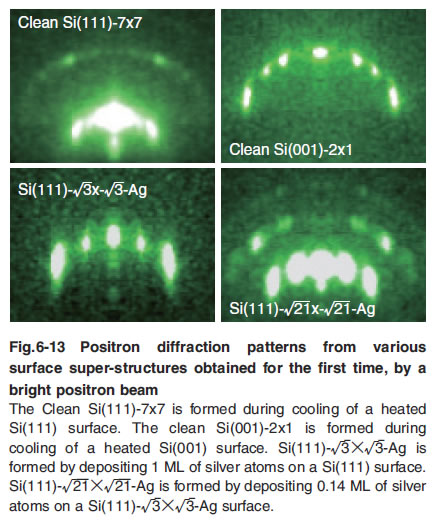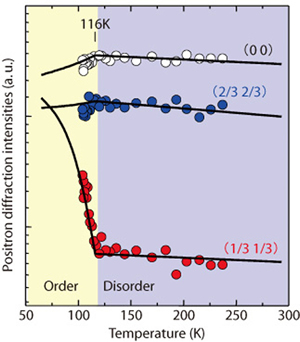

Fig.6-14 Temperature dependences of positron diffraction intensities from a silver super-structure on Si
Positron is the anti-particle of an electron. Its rest mass and spin magnitude are the same, but the charge is positive. A well-collimated and highly parallel positron beam is totally reflected at a material's surface with negligible penetration into the bulk at small enough glancing angles. Since the total reflection intensity of a positron beam is sensitive to the surface state, one should be able to study material surfaces in greater detail than existing methods.
To observe positron diffraction patterns of total reflection, we need to have a brighter positron beam. Traditional positron beams generated using simple extraction grids and electrostatic lenses are insufficient. We attempted to generate a positron beam using an immersion lens system composed of several pinhole electrodes, and electro-magnetic lenses similar to those in electron microscopes. Consequently, we obtained a positron beam whose brightness is one order of magnitude greater. Using this positron beam, we succeeded in observing the positron diffraction patterns produced by total reflection from some surface super-structures for the first time (Fig.6-13). Currently, we are probing several surface super-structures by the bright positron beam. Here, we introduce our study of phase transition of silver super-structure on Si as an example.
By depositing 1 ML silver atoms onto a Si-7x7 surface, a silver super-structure having a new periodicity is formed. Conventional electron and X-ray diffraction methods cannot determine the silver coordinates precisely due to their low surface sensitivities. The mechanism of the phase transition of silver super-structure on Si has not yet been clarified. We investigated the temperature dependences of positron diffraction intensities from the silver super-structure on Si (Fig.6-14). Here, (0 0), (1/3 1/3) and (2/3 2/3) are diffraction spots. The (1/3 1/3) spot intensity exhibits a dramatic change at T=116K. This indicates phase transition. In the phase transition models proposed based on electron and X-ray diffraction studies, the above result is not explained. By detailed analysis, we found that the observed temperature dependences are well reproduced by an order-disorder phase transition. This settles the long debate on the phase transition of the silver super-structure on Si.
Thus, we demonstrated that diffraction of a bright positron beam is useful to reveal new aspects of material surfaces.